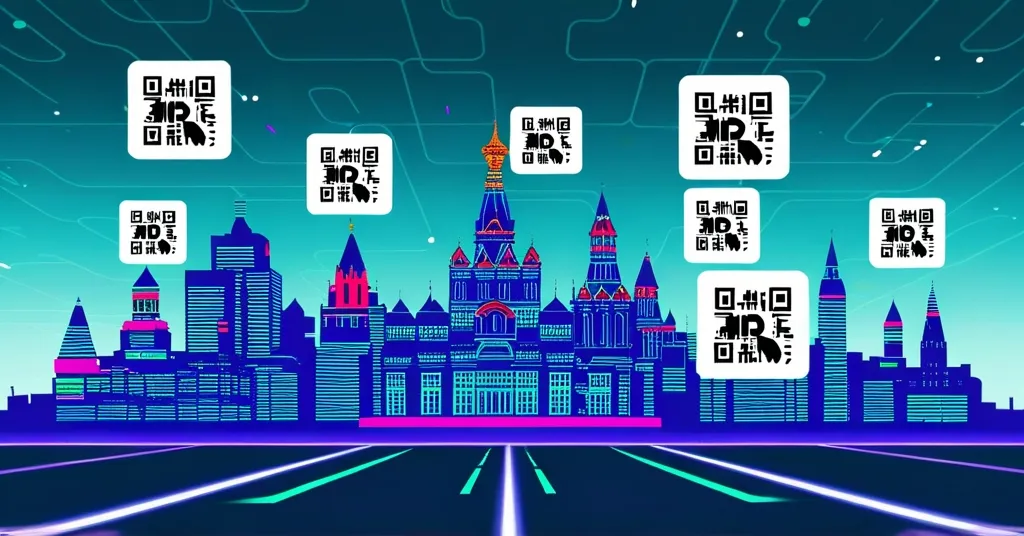Russia Mandates Digital Ruble Use Starting July 2025: Banks and Merchants Required

Russia’s State Duma Pushes Forward with Digital Ruble Mandate
Russia’s State Duma has introduced a new bill that mandates the use of the digital ruble, the country’s central bank digital currency (CBDC), starting from July 1, 2025.
- Russia’s CBDC, the digital ruble, becomes mandatory for banks and merchants.
- Implementation begins July 1, 2025, expanding to all banks by 2027.
- Merchants with high revenues must accept digital ruble payments.
- A universal QR code system for transactions is on the way.
The digital ruble represents a significant leap forward in Russia’s digital transformation, leveraging technology similar to blockchain to facilitate seamless financial transactions. Starting in 2025, systemically important banks will lead the charge, with a phased rollout ensuring all banks are on board by 2027. This approach aims to foster widespread adoption without disrupting the financial ecosystem. Picture this: you’re in a Moscow cafe, and instead of fumbling for cash, you simply scan a QR code with your digital ruble wallet to pay for your morning coffee. That’s the future Russia is building.
Merchants with annual revenues exceeding 30 million rubles must accept digital ruble payments by July 2025, reduced to 20 million rubles by July 2026. However, businesses in remote areas without mobile or internet service are exempt, ensuring inclusivity across the nation. This mandate aligns with broader amendments to consumer protection laws, signaling Russia’s commitment to integrating the digital ruble into its financial fabric.
The cornerstone of this digital revolution is a universal QR code system, designed to streamline transactions. Whether paying a notary or buying groceries, QR codes will become the standard unless otherwise specified. The National Payment Card System (NSPK) is tasked with overseeing this universal payment code, ensuring a smooth transition across the country.
Russia’s push for the digital ruble reflects a global trend where nations are exploring CBDCs to modernize their financial systems. This move could streamline cross-border settlements, particularly crucial given Russia’s exclusion from SWIFT, the Society for Worldwide Interbank Financial Telecommunication, a global messaging network used for international money transfers. Yet, it also raises questions about economic sovereignty, especially with ongoing talks about interfacing with China’s digital currency platforms. Will this digital currency be a tool for financial innovation or a means for increased government control?
While cryptocurrencies and stablecoins have their role in the financial revolution, the digital ruble stands out as a regulated CBDC, promising stability and universal acceptance. The collapse of TerraUSD and Luna in 2022 serves as a reminder of the volatility and risks associated with less regulated digital assets. The digital ruble might be the antidote to the chaos of crypto, but at what cost to privacy and freedom?
The digital ruble’s infrastructure aims to ensure seamless transactions and broad adoption, with a focus on minimizing challenges for businesses and banks. However, the potential for increased government surveillance and control over financial transactions is a concern. Is the digital ruble a step towards financial freedom, or is it Big Brother’s dream come true?
Comparing Russia’s digital ruble with other CBDCs like China’s digital yuan or the Bahamas’ Sand Dollar provides a broader perspective on global financial innovation. While each CBDC has unique features, the common goal is to enhance transaction efficiency and financial inclusion. However, the digital ruble’s interoperability with other CBDCs, particularly the digital yuan, could increase Russia’s economic dependency on China, posing risks to its sovereignty.
As Russia navigates international economic pressures and sanctions, the digital ruble offers a way to maintain control over its financial infrastructure. Yet, the devil is in the details, and only time will tell if this bold move will truly disrupt the status quo or merely reshape it.
Key Takeaways and Questions
- What is the digital ruble?
The digital ruble is Russia’s central bank digital currency (CBDC), designed to be used as legal tender and utilizing technology similar to blockchain for transaction tracking. - When will the digital ruble implementation begin?
Implementation begins on July 1, 2025, starting with systemically important banks. - Which businesses are required to accept digital ruble payments?
Businesses with annual revenues over 30 million rubles by July 2025, reducing to 20 million rubles by July 2026, must accept digital ruble payments. - What is the role of the QR code system in the digital ruble?
The QR code system will facilitate seamless digital ruble payments, required for all transfers unless alternative methods are introduced. - Who is responsible for implementing the universal payment code?
The National Payment Card System (NSPK) is tasked with implementing the universal payment code. - What exemptions are provided in the bill?
Businesses operating in areas without mobile or internet service are exempt from the requirement to accept digital ruble payments. - How does this bill align with other laws?
The bill aligns with amendments to consumer protection laws, making it necessary for merchants to comply with digital ruble use. - Could the digital ruble lead to more financial privacy or less?
The digital ruble could potentially lead to less financial privacy due to the increased ability of the government to track transactions, raising concerns about surveillance. - How might the digital ruble impact global trade?
The digital ruble could simplify and accelerate cross-border settlements, potentially fostering new trade relationships, but it also raises concerns about economic dependency on countries like China.
As the digital ruble rolls out, it’s clear that the future of finance is digital, decentralized, and daring. Whether this move will truly disrupt the status quo or merely reshape it remains to be seen. But one thing’s for sure: the digital ruble is a bold step towards a new financial era, and it’s one we should all keep our eyes on.



